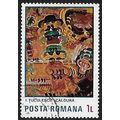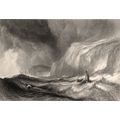Singapore - Haw Par Villa, Pasir Panjang - Chinese Buddha -postcard by SW c1970
- Condition : Used
- Dispatch : 2 Days
- Brand : None
- ID# : 206289039
- Quantity : 1 item
- Views : 144
- Location : United Kingdom

- Seller : justthebook (+1703)
- Barcode : None
- Start : Sat 01 Jan 2022 10:38:35 (EDT)
- Close : Run Until Sold
- Remain : Run Until Sold
Checks/Cheques
 for 1 item(s) edit
for 1 item(s) edit
Shipping Calculator
More Listings from This Seller view all
Seller's Description
- Postcard
- Picture / Image: Haw Par Villa, Singapore - Chinese Buddha
- Publisher: 'SW', Singapore
- Postally used: no
- Stamp: n/a
- Postmark(s): n/a
- Sent to: n/a
- Notes / condition:
Please ask if you need any other information and I will do the best I can to answer.
Image may be low res for illustrative purposes - if you need a higher definition image then please contact me and I may be able to send one. No cards have been trimmed (unless stated).
------------------------------------------------
Postage & Packing:
Postage and packing charge should be showing for your location (contact if not sure).
No additional charges for more than one postcard. You can buy as many postcards from me as you like and you will just pay the fee above once. Please wait for combined invoice. (If buying postcards with other things such as books, please contact or wait for invoice before paying).
Payment Methods:
UK and all other locations - PayPal or other methods listed above.
NOTE: All postcards are sent in brand new stiffened envelopes which I have bought for the task. These are specially made to protect postcards and you may be able to re-use them.
I will give a full refund if you are not fully satisfied with the postcard.
----------------------------------------------
Text from the free encyclopedia WIKIPEDIA may appear below to give a little background information (internal links may not work) :
*************
Haw Par Villa (Chinese: 虎豹別墅; pinyin: Hǔ Bào Biéshù) is a theme park located along Pasir Panjang Road in Singapore. The park contains over 1,000 statues and 150 giant dioramas depicting scenes from Chinese mythology, folklore, legends, history, and illustrations of various aspects of Confucianism. During the 1970s and 1980s, the park was a major local attraction; it is estimated that the park then welcomed at least 1 million annual visitors,[1] and is considered as part of Singapore's cultural heritage.[2] As of 2018, under the park operator Journeys, efforts to revitalise the park are ongoing with the holding of themed events[3] and the planning and construction of ancillary museums.[4]
Burmese-Chinese brothers Aw Boon Haw and Aw Boon Par, the developers of Tiger Balm, moved their business from Burma to Singapore in 1926. The site, which is in front of a small hill and faces the Singapore Strait, was deemed suitable based on considerations of feng shui,[2] and was purchased in 1935. On the site, a Har Par Villa was being built for the next two years.[5] The villa was designed by Ho Kwong Yew and was of Art Deco architecture.[5][6] The villa was bombed by the Japanese during the World War II,[7] and was subsequently occupied by them.[6] After the war ended, the villa was demolished.[6] Between 1937 and his death in 1954 (when the garden was declared public property, and turned into a park), Boon Haw commissioned statues and dioramas in the garden that served to teach traditional Chinese values.[2]
In the 1950s and 1960s, before the advent of television and shopping malls, the park was a popular recreational destination for Singaporean families.[2] Many Singaporean adults, in a 1995 survey, reported memories of visiting the park as a child and learning about Chinese folk history and morality.[2]
In the 1980s, in a bid to restore Singapore's "oriental mystique", Singapore Tourism Board saw to the redevelopment of the park (along with Chinatown and Little India).[2] In 1986, the International Theme Parks Pte Ltd, announced an investment of $30 million to modernise the themed park. This company was a joint venture formed by Fraser & Neave and Times Publishing, and had invested on the latest animatronics and technology to enhance the attractions in hope to create an 'oriental Disneyland', a theme park meeting Western technology with Eastern mythology.[8]
In 1988, Singapore Tourism Board took charge of the Tiger Balm Gardens and renamed it "Haw Par Villa Dragon World". The Haw Par in the park's name is based on the Aw brothers' personal names—Haw and Par, which mean "tiger" and "leopard" respectively. The dioramas and statues were restored, while plays, acrobatic displays and puppet shows were organised and held there. The management imposed entrance fees but the high fees discouraged visitors, so the management incurred a loss of S$31.5 million over 10 years. The park management made a profit during its first year of operations after renovations in 1994, broke even in 1995, but started incurring losses over the next three years and was forced to provide free entry in 1998. In March 2001, the Singapore Tourism Board renamed it "Tiger Balm Gardens".[9] The park is now open every day from 9 am to 7 pm (with last entry at 6 pm) and admission is free.
Between March 2006 and March 2012, the S$7.8 million Hua Song Museum, which focused on the Chinese diaspora, operated within the park.[1]
In 2014, artists Chun Kai Qun, Chun Kaifeng and Elizabeth Gan, under the curatorial platform Latent Spaces, staged four exhibitions in the theme park's unused spaces. Their first exhibition, Nameless Forms, featured the works by the Chun twins, Darren Tesar, Sai Hua Kuan and collective Yunrubin, which respond to the place's defunct exhibition halls, idle pavilions and the materials that were left behind.[10]
The best-known attraction in Haw Par Villa is the Ten Courts of Hell, which features gruesome depictions of Hell in Chinese mythology and Buddhism. This attraction used to be set inside a 60-metre long trail of a Chinese dragon but the dragon has been demolished, so the attraction is now covered by grey stone walls.
Other major attractions include dioramas of scenes from Journey to the West, Fengshen Bang, The Twenty-four Filial Exemplars, Legend of the White Snake, Romance of the Three Kingdoms; statues of mythological figures such as the Laughing Buddha and Guanyin, and historical personages such as Jiang Ziya, Su Wu and Lin Zexu; the 12 animals in the Chinese zodiac, and others. There are also monuments dedicated to the Aw brothers and their parents.
Listing Information
| Listing Type | Gallery Listing |
| Listing ID# | 206289039 |
| Start Time | Sat 01 Jan 2022 10:38:35 (EDT) |
| Close Time | Run Until Sold |
| Starting Bid | Fixed Price (no bidding) |
| Item Condition | Used |
| Bids | 0 |
| Views | 144 |
| Dispatch Time | 2 Days |
| Quantity | 1 |
| Location | United Kingdom |
| Auto Extend | No |



















